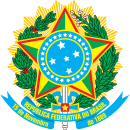
Back ব্ৰাজিলৰ শ্ৰুতিকথা Assamese Mitología brasileña Spanish Folklore brésilien French פולקלור ברזילאי HE Mitologia brasiliana Italian Brasiliansk mytologi NB Folclore brasileiro Portuguese Бразилски фолклор Serbian
This article has multiple issues. Please help improve it or discuss these issues on the talk page. (Learn how and when to remove these messages)
|
| Mythology |
|---|
| Part of a series on the |
| Culture of Brazil |
|---|
 |
| Society |
| Topics |
| Symbols |

Brazilian mythology is a rich and diverse part of Brazilian folklore with cultural elements, comprising folk tales, traditions, characters, and beliefs. The category is representative of Brazil’s greater culture, being a melting pot of Iberic traditions brought by the Portuguese settlers, African traditions brought by Africans during the colonial slave trade, and the traditions and stories of indigenous groups that have occupied Brazil for centuries.
Because Brazil is a melting pot of cultures, many elements of Brazilian mythology are shared by the traditions of other countries, especially its South American neighbors and Portugal. There is no singular mythological doctrine in Brazil; instead, there is a patchwork collection of stories and teachings from different cultural groups that each contribute unique stories, teachings, and figures to the overall mythology of Brazil.
The mythology of Brazil, especially that of the local indigenous groups, has largely been kept alive through oral tradition and theater-like storytelling.[1] Because of the historic reliance upon oral tradition, a lack of written records, and great differences in the geographies of different native groups, myths and stories with the same roots developed wide variation in different regions.[2] While this leads to some ambiguity and confusion among scholars about “original” versions, there are similarities and common themes like reverence for nature, ethical teachings, and origin stories. The similarities act like a common thread connecting each region as a singular culture.
- ^ Figueira, Gastón (1942). "Mythology of the Amazon Country". Books Abroad. 16 (1): 8–12. doi:10.2307/40082369. ISSN 0006-7431. JSTOR 40082369.
- ^ Bierhorst, John (1988). The Mythology of South America (1st Quill ed.). New York: WilliamMorrow. ISBN 0688107397.